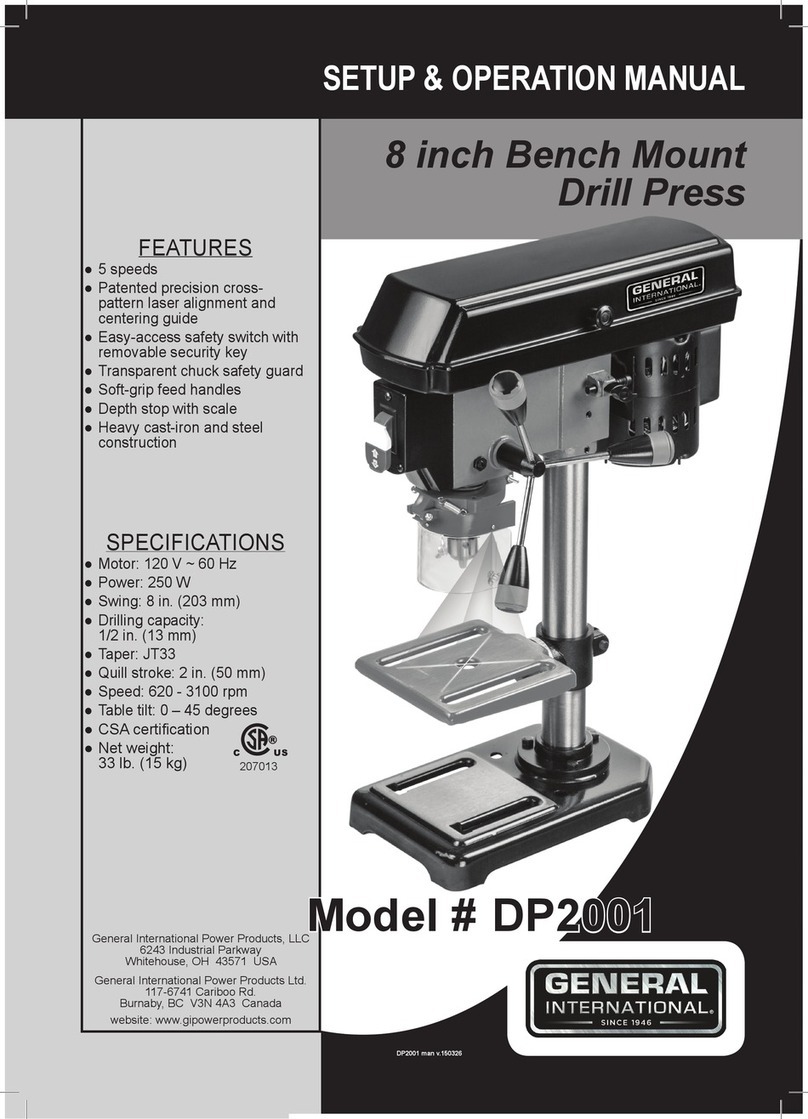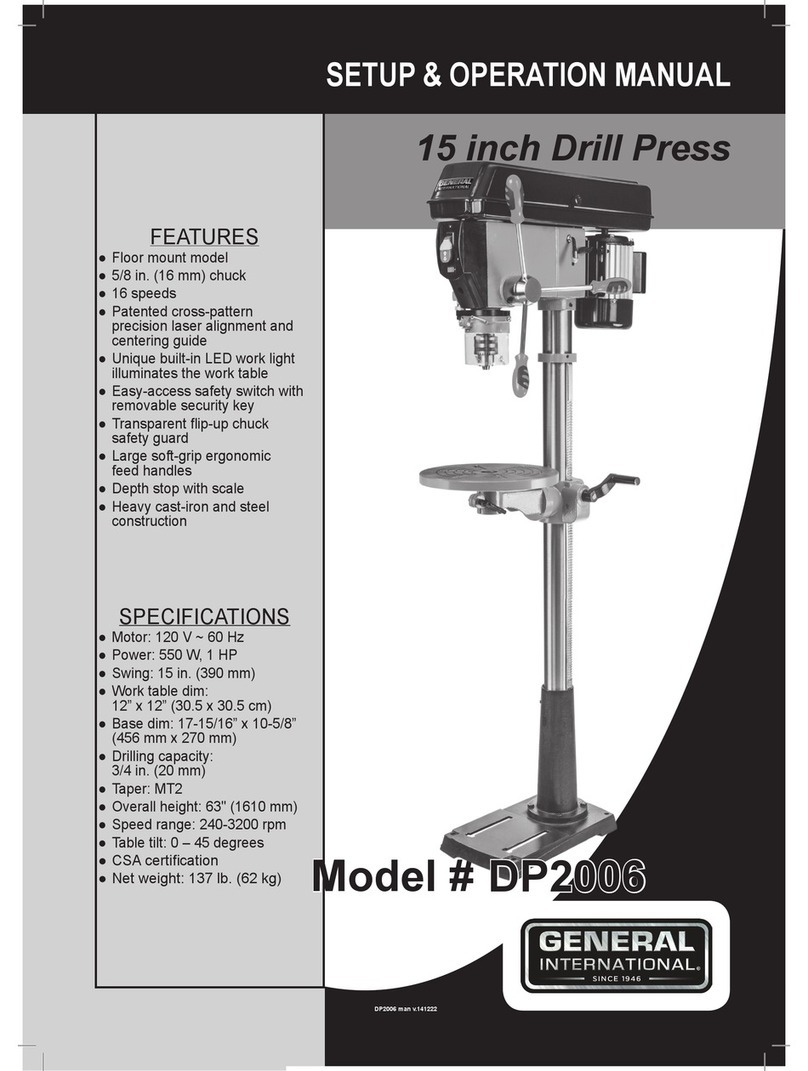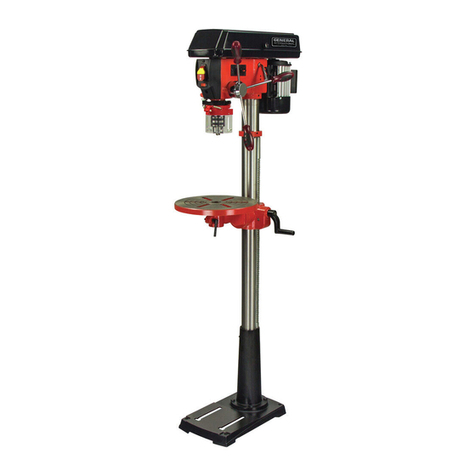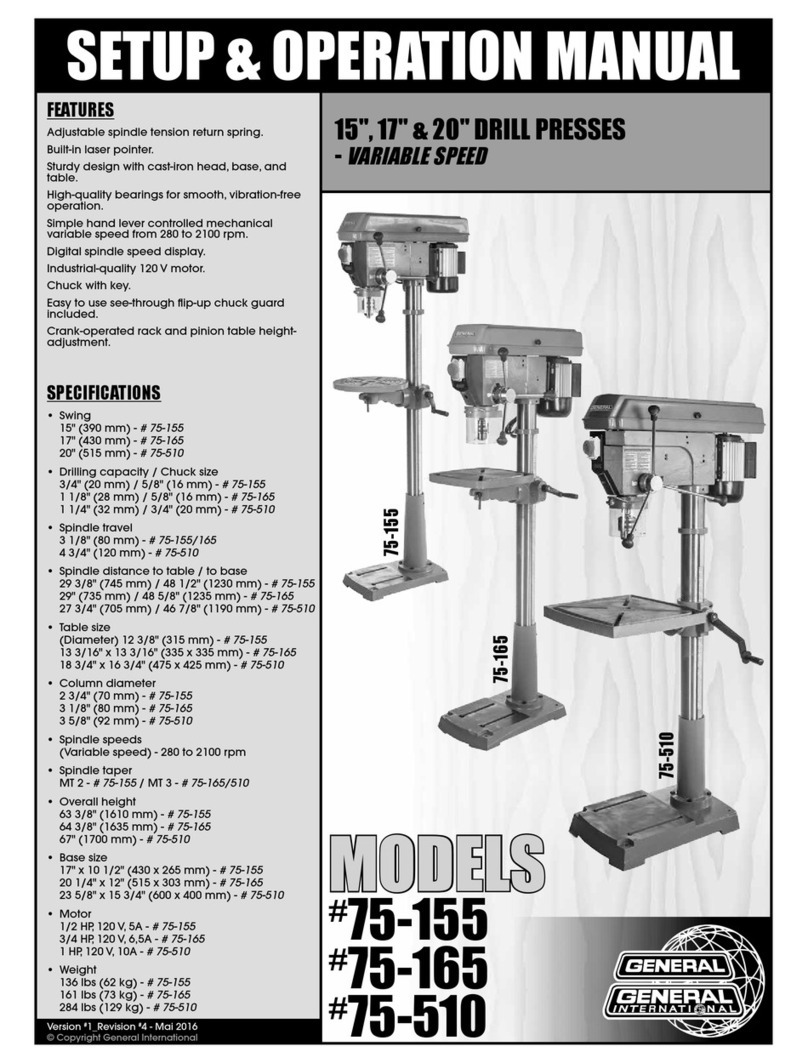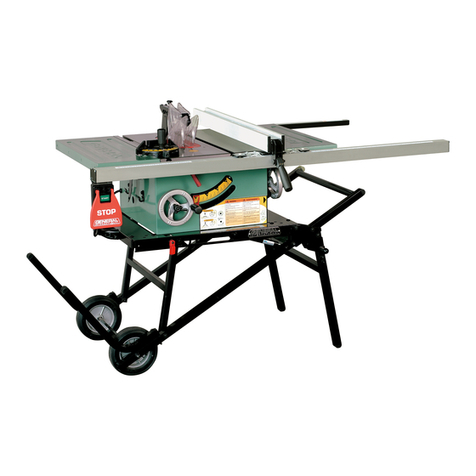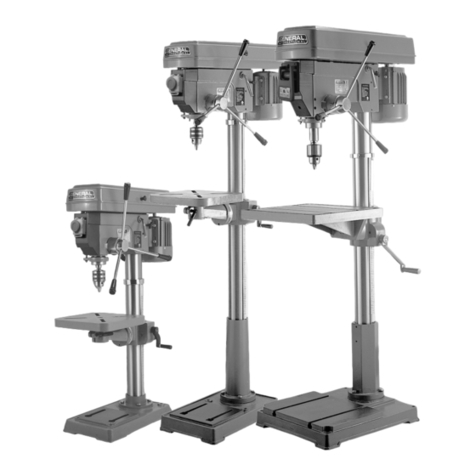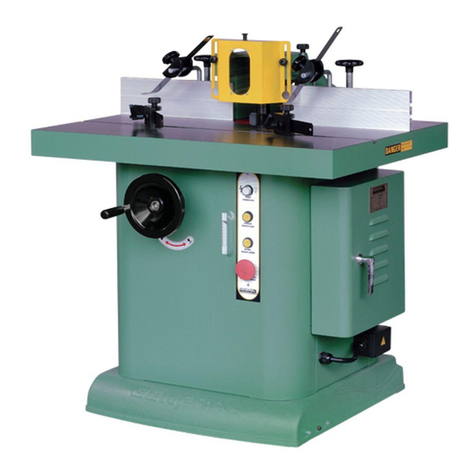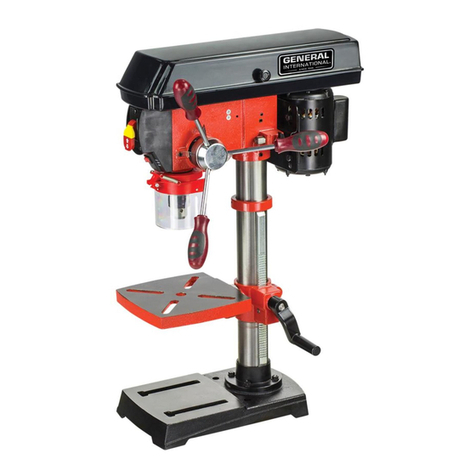
5
To help ensure safe operation, please take a moment to learn the machine’s applications and limitations, as well as poten-
tial hazards. General® International disclaims any real or implied warranty and holds itself harmless for any injury that
may result from improper use of its equipment.
RULES FOR SAFE OPERATIO
1.Do not operate the wood lathe when tired, distrac-
ted, or under the effects of drugs, alcohol or any
medication that impairs reflexes or alertness.
2. The working area should be well lit, clean and free
of debris.
3. Keep children and visitors at a safe distance when
the wood lathe is in operation; do not permit them
to operate the wood lathe.
4. Childproof and tamper proof your shop and all
machinery with locks, master electrical switches
and switch keys, to prevent unauthorized or unsu-
pervised use.
5. Stay alert! ive your work your undivided atten-
tion. Even a momentary distraction can lead to seri-
ous injury.
6. Fine particulate dust is a carcinogen that can be
hazardous to health. Work in a well-ventilated area
and whenever possible use a dust collector and
wear eye, ear and respiratory protection devices.
7. Do not wear loose clothing, gloves, bracelets, neck-
laces or other jewelry while the wood lathe is in
operation. Wear protective hair covering to contain
long hair and wear non-slip footwear.
8. Be sure that adjusting wrenches, tools, drinks and
other clutter are removed from the machine before
operating.
9. Keep hands well away from the spindle, the spin
ning workpiece, and all moving parts. Use a brush,
not hands, to clear away chips and dust.
10. Do not use stock containing defects such as che-
cks, splits, cracks, knots or foreign objects. Before
starting, inspect stock and remove all foreign ob-
jects such as dirt, nails, staples or any object that
could damage a tool or become dislodged and
fly free and cause injury.
11. Select appropriate turning speed for the size and
type of workpiece being turned and use lowest
speed when starting a new workpiece.
12. Before turning on the wood lathe, make sure the
workpiece is securely installed between centers
and that all locking levers and moveable or remov-
able parts are tightened down and secured.
13. Adjust the cutting tool parallel and as close as pos-
sible to the workpiece and, before starting the
lathe, turn the workpiece by hand, at least one
full rotation to make sure that it does not come in
contact with the cutting tool.
14. Maintain turning tools with care. Keep turning tools
sharp and clean for best and safest performance.
15. Avoid working from awkward or off balance posi-
tions. Do not overreach and keep both feet on floor.
16. Keep guards in place and in working order. If a
guard must be removed for maintenance or clea-
ning be sure it is properly re-attached before using
the tool again.
17. Use of parts and accessories NOT recommended
by
ENERALINTERNATIONAL
may result in equip-
ment malfunction or risk of injury.
18. Never stand on machinery. Serious injury could
result if the tool is tipped over.
19. Always disconnect the tool from the power source
before servicing, changing accessories, perfor-
ming any maintenance or cleaning, or if the
machine will be left unattended.
20. Make sure that switch is in
the “OFF”
position before
plugging in the power cord.
21. Make sure the tool is properly grounded. If equip-
ped with a 3-prong plug it should be used with a
three-pole receptacle. Never remove the third
prong.
22. Do not use this wood lathe for other than its
intended use. If used for other purposes,
ENERAL
INTERNATIONAL
disclaims any real implied warranty
and holds itself harmless for any injury, which may
result from that use.


